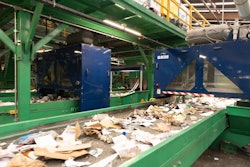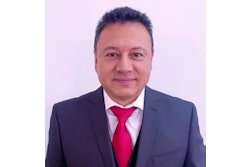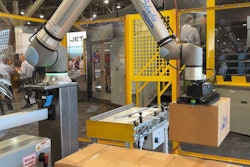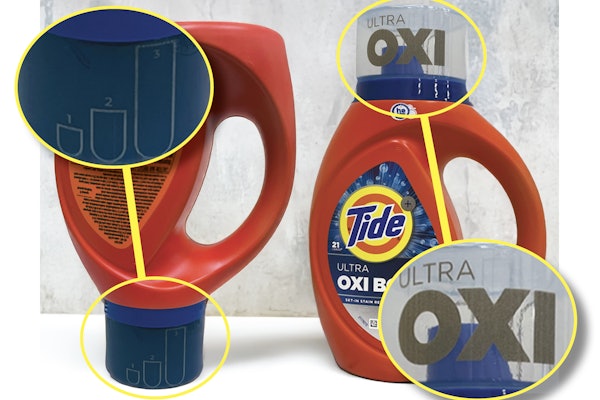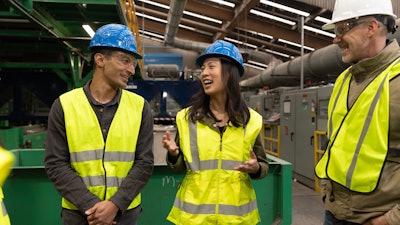
Glacier, a Bay Area AI and robotics company whose cellular robotic equipment improves sortation at MRFs and municipal recycling centers, this morning announced it has raised $7.7 million in funding from Amazon's Climate Pledge Fund and venture capital investor NEA (New Enterprise Associates), with additional participation by notable investors AlleyCorp, Overture Climate VC, and VSC Ventures. Today, nearly 80% of residential recyclables in the U.S. are not recycled, stakeholders say, contributing to significant environmental pollution and resource depletion. This sortation and recovery tech is aimed at solving that problem and unlocking recoverable supply.
Why is a global e-retailer like Amazon interested in packaging’s end of life at a MRF [material recovery facility]? Simply stated, they’re in it for packaging traceability and design insights they think will help Amazon meet its Climate Pledge Fund goals. The data gleaned by this AI-based robotic equipment promises to reveal actionable new information about packaging's end-of-life journey that can be fed back to Amazon--or its CPG and brand owner partners. This class of primary and secondary packagers could use these insights to inform packaging format changes, such as optimizing for more recoverable packaging designs or materials, or selecting for packaging that consumers are most likely to recycle. Ultimately, this should create more and cleaner bales of higher quality PCR packaging materials. Recycling and packaging circularity both are said to ladder up to make a massive positive impact on climate change and CO2 reduction, aligning with Amazon's stated climate goals.
“Amazon is always looking at new ways to innovate on behalf of our customers, and plastic packaging is no exception,” says Nick Ellis, principal of Amazon’s Climate Pledge Fund. “In order to build a future where new materials can be recycled at scale, we must test options to move these materials through the recycling system. Partnering with Glacier will enable us to test the role of novel AI and robotics-based recycling technologies so that we can identify and aggregate novel packaging materials that can ultimately be recycled and repurposed.”
Amazon is also entering this game since the company is a consumer of the very PCR that MRFs and reprocessors unlock. More and higher quality bales of recycled materials translate to more supply of circular PCR and recycled materials. More availability makes PCR less expensive, perhaps even reaching price parity with virgin fibers and resins. And higher quality means more robustness, better aesthetics, and greater range of uses. Beyond just down-cycling materials into park benches or decking, this includes recycling these recovered materials to become the same packaging once again, perhaps even food-contact packaging one day.
“A truly circular economy is the scope of what glacier is trying to achieve,” Rebecca Hu, cofounder of Glacier, told Packaging World. “When we talk about improving recycling, we often think of that back half of the circular economy—more and better MRF infrastructure—and that is certainly important. But we at Glacier wonder, ‘what would a MRF’s job look like if every single piece of packaging coming through had been specifically designed in order to be easy to identify and easy to recover?' That's a world that requires stakeholders and brands like Amazon to actually participate. So that’s why we're really heartened by this partnership with them.”
Who's actually using the tech?
End users of this technology would be MRFs and municipal recovery centers. Other forms of robotic sortation are available on the market, but Glacier says payback time is long (up to 10 years) and complexity of the equipment is an obstacle to deployment. Traditional recycling facilities need more access to the highly specialized machinery required for efficiently sorting a wide variety of materials, and the barrier to entry with this Glacier model is comparatively and intentionally low, Hu says.
Glacier’s technology is designed for ease of deployability. Space limitations, installation downtime, and capital requirements often constrain recycling facilities. To address these concerns, Glacier designed a robot that occupies the same footprint as a person and can be installed with no facility downtime and no heavy machinery. One Glacier robot can pay back in less than one year.
"We're always looking for ways to incorporate new technology into our sorting process," adds Eduardo Rodriguez, deputy director of the City of Phoenix Public Works Department. "AI cameras are a great way to help us catch recyclables that were missed in the initial sorting, and to collect data that will help us make needed adjustments within our Materials Recovery Facility."
Using advanced AI capabilities, Glacier can identify more 30 different materials, spanning from broad categories like plastic (PET, PP, HDPE, etc.) and aluminum to specific items such as toothpaste tubes and cat food cans. Glacier’s robots effectively sort a similarly wide array of items, including challenging 2D materials such as film, flexible packaging, or trash bags, which are notoriously difficult to sort using traditional recycling processes.
“To me, the Glacier story is a wonderful example of the intersection between climate [change prevention] and cyber [tech], with the two coming together to unlock a new superpower and solve a problem that previously wasn't possible,” Ellis told Packaging World of the partnership. “Until AI and faster processing speeds came along over the last few years—robotics evolutions and the quality of picking—these things would have been incredibly difficult to do five or 10 years ago. And now, there’s this new wave of innovation is being unlocked by these tools and innovators like [cofounders] Areeb Malik and Rebecca. I just find it fascinating to observe how these two things are playing together, all the way back into like energy demands and how we're going to power those AI data centers and some of the analyses that need to happen here. Similarly, just with the innovation on the climate tech side, coming from entrepreneurs like Rebecca and Areeb, that realize they can use these tools to solve problems that previously eluded us for many years.”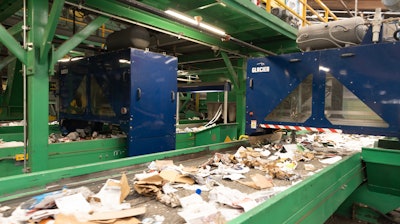 A stream of recycled waste, mostly packaging, enters Glacier's AI-supported robotic sortation equipment.
A stream of recycled waste, mostly packaging, enters Glacier's AI-supported robotic sortation equipment.
Glacier will allocate a significant portion of the funding towards team expansion and developing its low-cost, high-performance AI-enabled robots, which streamline recyclable sorting while gathering real-time data on recycling streams for businesses. Glacier also aims to use the funding to bolster its recycling capabilities, particularly in light of its recent collaboration with Amazon. This partnership is geared towards enhancing traceability and recovery processes for recyclable materials.
“Waste is a significant climate issue that’s not being solved quickly enough and we believe we’ve developed the right technology to solve it,” says Areeb Malik, co-founder of Glacier. “Our breakthrough lies in designing purpose-built machinery tailored to solve the needs of the recycling industry.”
Amazon’s investment is made possible through its Climate Pledge Fund and corporate venture capital fund, which earmarked $53 million for its Female Founder Initiative. Glacier is the second female CEO-led company to receive investment from the Climate Pledge Fund. “The diversity of Glacier’s team is an invaluable asset as they work to solve a problem as complex as the climate crisis. We look forward to supporting more companies like them through their entrepreneurial journey,” adds Phoebe Wang, Investment Partner at Amazon Climate Pledge Fund.
“We’re excited by the progress we’ve made in the recycling industry, but to maximize Glacier’s impact on recycling, it’s essential that we work with stakeholders across the circular economy, including brands,” concludes Hu. “That’s why we’re thrilled to collaborate with a sustainability leader like Amazon.” PW

